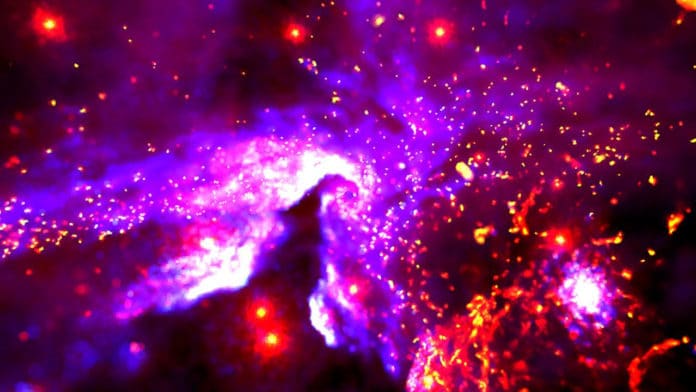NASA scientists have created a new visualization called ‘Galactic Center VR’ that lets you experience 500 years of cosmic evolution around the supermassive black hole at the center of the Milky Way.
Scientists created this visualization by combining data from telescopes with supercomputer simulations and virtual reality (VR). It is based on data from NASA’s Chandra X-ray Observatory and other telescopes.
This new installment features their NASA supercomputer simulations of material streaming toward the Milky Way’s four-million-solar-mass black hole known as Sagittarius A* (Sgr A*). The visualization has been loaded into a VR environment as a novel method of exploring these simulations and is available for free at both the Steam and Viveport VR stores.
When the winds from the Wolf-Rayet stars collide, the material is heated to millions of degrees by shocks— like sonic booms— and produce copious amounts of X-rays. The center of the galaxy is unreasonably removed for Chandra to identify individual examples of these collisions. However, the general X-ray glow of this hot gas is distinguishable with Chandra’s sharp X-ray vision.
In the visualization, different colors represent assorted objects and phenomena. The twinkling white crosses are the Wolf-Rayet stars, and their orbits are in gey. The blue and cyan colors show the simulation’s X-ray emission from hot gas because of the supersonic wind collisions observed by Chandra. In contrast, the red and yellow show the entirety of the wind material, which is overwhelmed by more cooling gas and seen infrared and different telescopes. The purple is the place the red and blue overlap.
The visualization covers about three light-years, or about 18 trillion miles, centered on Sgr A*. Plus, it delivers a 3D perspective through the use of VR goggles.
Every element of the simulation is loaded into the VR environment, making a data-based simulation. By providing a six-degrees-of-freedom VR experience, the user can glance and move in any direction they pick. The client can likewise play the simulation at various speeds and choose between observing every one of the 25 winds or only one wind to see how the individual elements influence each other in this environment.
Dr. Christopher Russell of Pontificia Universidad Católica de Chile (PUC), who is now at the Catholic University of America and NASA Goddard Space Flight Center, presented this VR experience on behalf of himself and his colleagues of the Instituto de Astrofísica VR Lab at the 236th meeting of the American Astronomical Society meeting that is being held virtually for the first time.
The other team members are Baltasar Luco (PUC), Prof. Jorge Cuadra (PUC and Universidad Adolfo Ibáñez), and Miguel Sepúlveda (Universidad de Chile). Their simulations for this VR experience were run on a NASA High End Computing (HEC) supercomputer located at NASA’s Ames Research Center.
